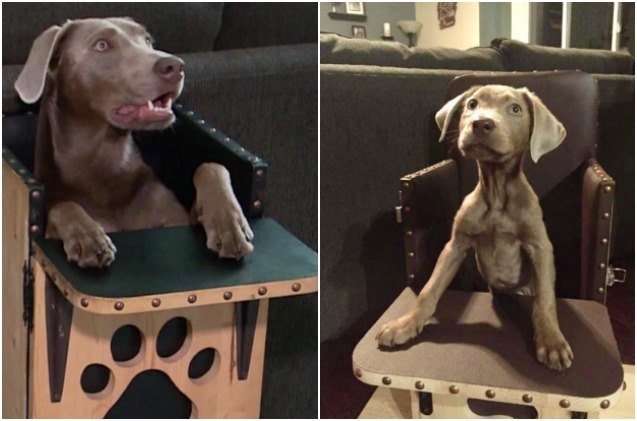Dog With Digestive Problems Dines in “High Chair” Style

At first sight, you may think this story is just pet people who have taken the term pampered pooch too far. But really, Tink the Retriever needs a special high chair in order to live. That’s because she suffers from a condition called Megaesophagus – this prevents food and drink from getting all the way to the stomach when it is ingested. In dogs, it often means they can starve or die from dehydration if not treated, and sadly, the condition is one that requires a great deal of care to ensure survival.
Related: How Water is Important for a Dog’s Digestive Health
Many dogs with Megaesophagus are euthanized because their owners simply can’t attend to the very rigid needs for feeding.
These needs often include eating in a Bailey Chair, which is basically a high chair for dogs. Because dogs who have Megaesophagus will ingest food but then keep it in their esophagus or regurgitate it, they need to sit in upright positions to keep the food working with natural gravity and help it move down.
Such is the case for Tink, from Grand Rapids, Michigan. Tink’s parents feed her four times a day, in the Bailey Chair, and have done so since she was nine-weeks-old, when she was first diagnosed. Tink’s parents say that it’s a process, but one they do regularly because otherwise, Tink is an amazing and ‘normal’ retriever and family member.
Once Tink has eaten, Tink’s dad Tom Sullivan says that they basically burp her for a few minutes, like they would a human, and even give massages in her throat to help the food go down easier and better. Tink seems to have no issue with the condition or accommodations, and in fact, seems like she couldn’t be living life better if she tried.
Related: New Lucy Pet Pet Food Line Helps Gut and Digestive Health
Unfortunately, dogs like Tink often end up dying because people can’t dedicate the time or effort, which results in a low survival rate. The Sullivans say that while it’s work, they are glad they are able to do it for their Tink.
They rely on online support groups and tips from others who have pets with megaesophagus and say that they’re happy their Tink has a chance at her great life!

More by Lori Ennis






















